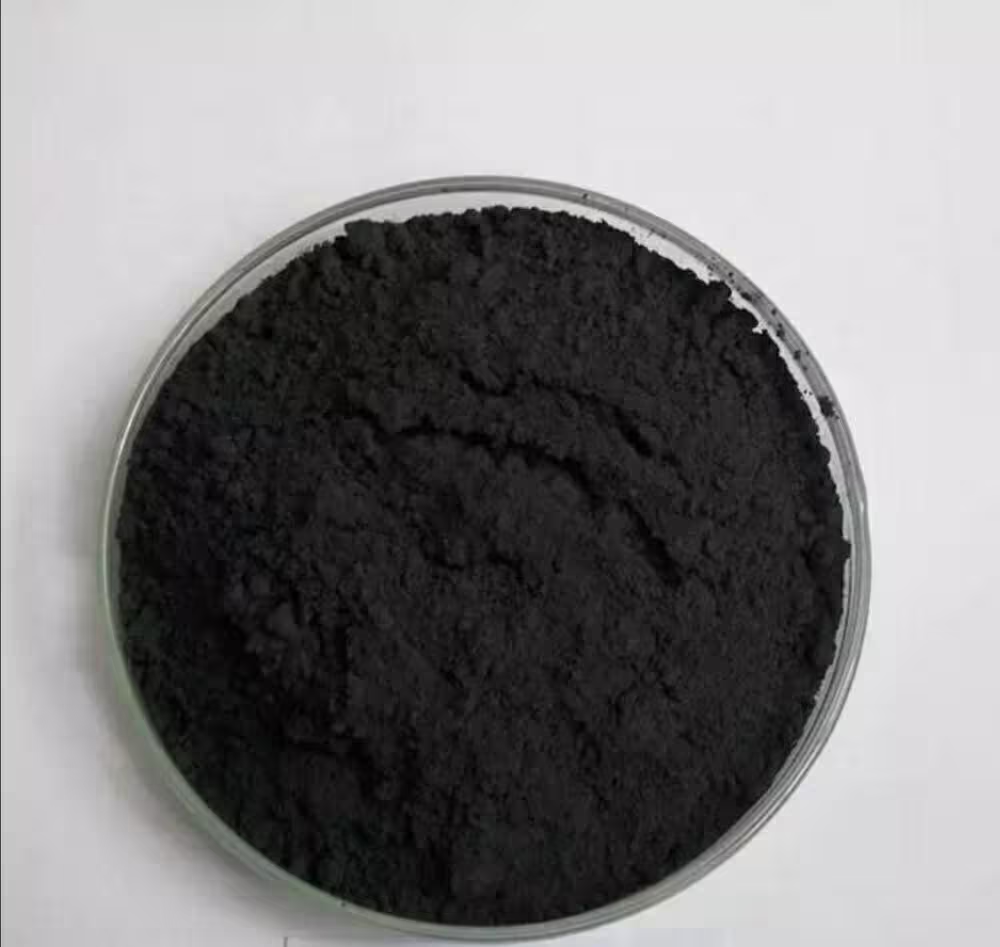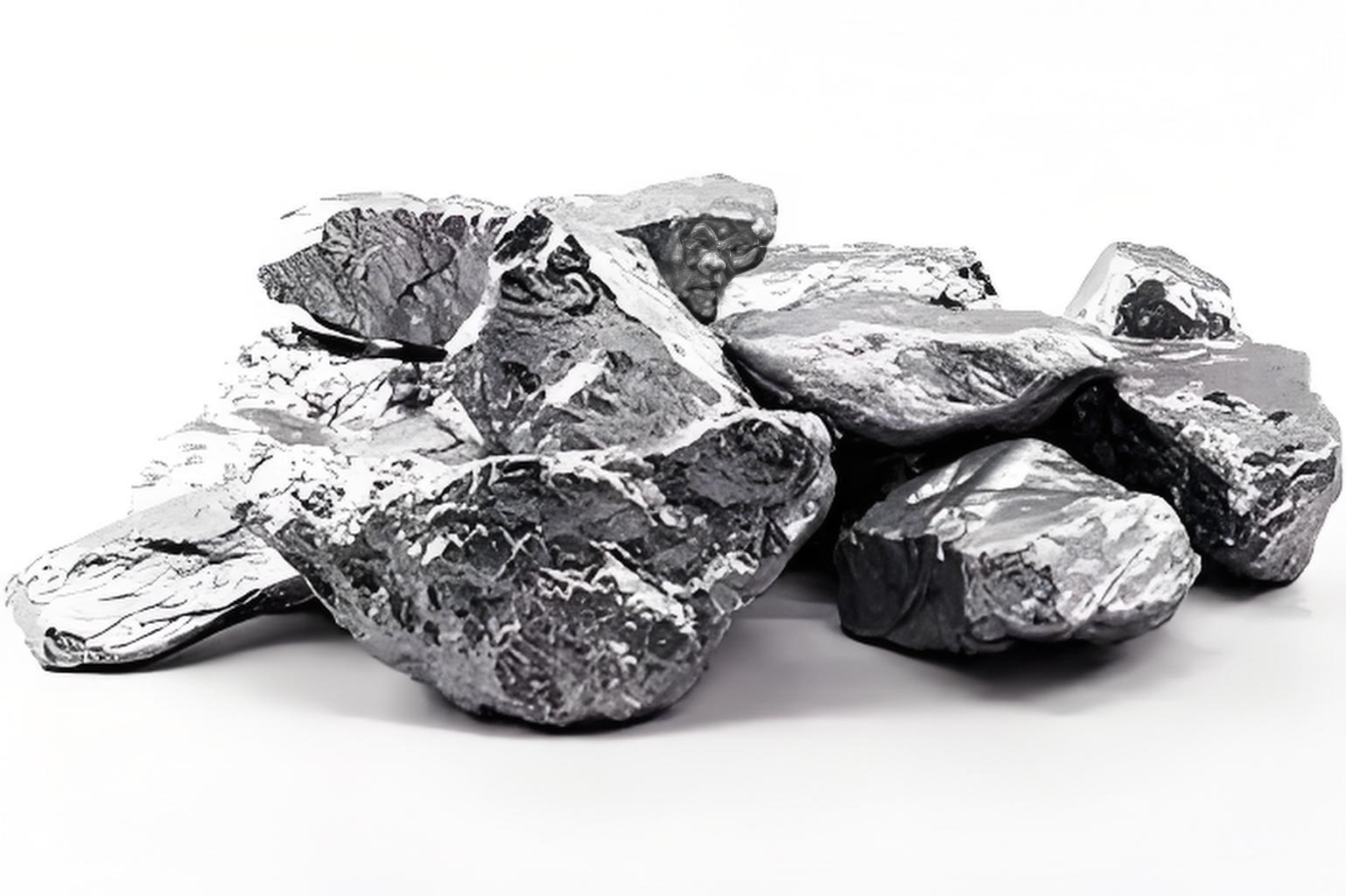Analysis of the properties, applications, and efficient extraction techniques of the rare and precious metal palladium
Release time:
2025-05-27
Palladium, a core member of the platinum group metals, has an atomic number of 46, an atomic weight of 106.42, and is located in Group VIII of the fifth period in the periodic table. Its electron configuration is [Kr] 4d¹⁰5s⁰. This fully filled d orbital electron structure gives palladium unique physicochemical properties.
I. Atomic Characteristics and Physicochemical Properties of Palladium
Palladium (Pd), a core member of the platinum group metals, has an atomic number of 46, an atomic weight of 106.42, and is located in Group VIII of the fifth period in the periodic table. Its electron configuration is [Kr] 4d¹⁰5s⁰. This fully filled d orbital electron structure gives palladium unique physicochemical properties. Metallic palladium exhibits a bright silvery-white luster, with a face-centered cubic (FCC) crystal structure and a lattice constant of 3.89Å. This structure gives it excellent ductility—it can be rolled into foils only 0.001 mm thick or drawn into wires less than 1 μm in diameter.
Key Physical Parameters:
Density: 12.02 g/cm³ (20℃), between platinum (21.45 g/cm³) and nickel (8.90 g/cm³);
Melting point: 1554.9℃, Boiling point: 2963℃, easier to process compared to platinum (melting point 1768℃);
Thermal conductivity: 71.8 W/(m・K), Electrical conductivity: 10.2 × 10⁶ S/m, with good thermal and electrical conductivity.
In terms of chemical properties, palladium is inert to oxygen at room temperature, only slowly oxidizing above 800℃ to form PdO, but it is easily soluble in aqua regia, hot nitric acid, and molten alkali. Its typical oxidation states are +2 and +4. +2 valence compounds (such as PdCl₂, Pd(NO₃)₂) readily form square planar coordination structures in aqueous solutions, a characteristic that is key to its catalytic applications.

II. Diverse Application Scenarios and Industrial Value of Palladium
(I) Catalytic Field: "Core Engine" of Industrial Transformation
Automotive Exhaust Purification
Palladium plays a dual role in three-way catalysts (TWCs), oxidizing CO and HC and reducing NOx. When exhaust gases pass through the catalyst, CO adsorbed on the palladium surface reacts with O₂ to produce CO₂, while simultaneously accelerating the reaction of NO with CO to produce N₂ and CO₂. It is estimated that a gasoline vehicle meeting the China VI standard requires about 1.5-2 grams of palladium, and the global automotive industry consumes more than 50% of the total palladium demand annually. With the advancement of the EU Euro 7 standard and the China VII standard, the demand for palladium in exhaust purification will continue to grow.
Chemical Synthesis and Energy Conversion
Hydrogenation reactions: Palladium-carbon catalysts (Pd/C) are widely used in the hydrogenation process of pharmaceutical intermediates (such as ibuprofen synthesis) and pesticides (such as glyphosate production). Their catalytic efficiency is 3-5 times that of nickel-based catalysts;
Fuel cells: In proton exchange membrane fuel cells (PEMFCs), palladium-platinum alloys (such as Pt-Pd/C) are used as anode catalysts to reduce reliance on platinum and improve resistance to CO poisoning;
Hydrogen production: Palladium membrane reactors utilize the selective permeability of palladium to hydrogen (at 300-500℃, the hydrogen permeability reaches 10⁻⁶ mol/(m・s・Pa)) to achieve effective separation and purification of hydrogen, with a purity of 99.999% or higher.
(II) Electronics Industry: Ensuring Miniaturization and Reliability
Multilayer Ceramic Capacitors (MLCCs)
Palladium, as an electrode material, is used in the printing and sintering of internal electrodes in MLCCs. Its good conductivity (resistivity 10.6 μΩ・cm) and thermal matching with ceramic dielectrics (coefficient of thermal expansion 11.7 × 10⁻⁶/℃) ensure the stability of capacitors at high frequencies. The global MLCC market consumes approximately 80 tons of palladium annually, mainly used in smartphones, automotive electronics, and other fields.
Electrical Contacts and Connectors
Palladium-nickel alloys (such as Pd-20Ni), due to their resistance to arc erosion (lifetime exceeding 10⁷ times) and low contact resistance (<5 mΩ), are used in key components such as aerospace relays and high-frequency communication connectors. For example, in the electrical system of the Boeing 787 aircraft, the use of palladium-based electrical contacts reduced the amount compared to traditional silver alloys by 30%, but increased reliability by 5 times.
(III) High-End Manufacturing and Civil Applications
Dental Restorative Materials
Palladium-silver alloys (such as Pd-40Ag) have excellent biocompatibility (cytotoxicity grade 0) and corrosion resistance, and are used to make porcelain-fused-to-metal crowns, implant abutments, etc. Compared to gold-based precious metal alloys, their density is 40% lower, and the cost is reduced by 50%, making them one of the mainstream materials in modern dentistry.
Jewelry
Palladium jewelry (950‰ purity), with its silvery-white color, non-discoloration, and lightweight characteristics (only 50% of the weight of gold for the same volume), is gradually becoming a new favorite among young consumers. In 2023, the global demand for palladium jewelry reached 20 tons, with domestic market share exceeding 60%.

III. Extraction and Purification Technology Evolution of Palladium
(I) Traditional Extraction Process: The Classic Path from Ore to Metal
Ore Pre-treatment
Palladium-containing ores are crushed to -200 mesh with 85% proportion, and then flotation is used to enrich palladium. The palladium grade in the obtained concentrate can be increased from 1-5 g/t in the original ore to 30-50 g/t. For copper-nickel sulfide ores, magnetic separation is used to separate nickel minerals, and palladium enters the subsequent smelting process with copper concentrate.
Pyrometallurgical Stage
Concentrates and fluxes (SiO₂, CaO) are smelted at 1200-1400℃ to produce palladium-containing matte (Cu₂S-FeS) or nickel matte (Ni₃S₂-FeS). Taking copper smelting as an example, the distribution coefficient of palladium in matte reaches 100-200, significantly enriching in the main metal phase. Subsequently, FeS is removed by converter blowing to obtain crude copper or crude nickel containing approximately 100-500 g/t palladium.
Hydrometallurgical Refining Process
Anode slime treatment: During the electrolytic refining of crude copper, palladium is enriched in the anode slime (palladium content 5-10%). After selenization and tellurization are removed by sulfuric acid roasting, it is dissolved with aqua regia (reaction formula: 3Pd + 12HCl + 2HNO₃ → 3H₂PdCl₄ + 2NO↑ + 4H₂O). After filtration, the filtrate contains approximately 50 g/L palladium;
Precipitation and reduction: Ammonium chloride is added to the filtrate to generate a yellow (NH₄)₂PdCl₆ precipitate, which is calcined at 800℃ to reduce it to sponge palladium (purity 99.5%);
Electrolytic refining: Using sponge palladium as the anode and pure palladium plate as the cathode, electrolysis is carried out in an HCl-H₂SO₄ system. By controlling the current density at 100-150 A/m², electrolytic palladium with a purity of more than 99.95% can be obtained.
(II) Modern Efficient Separation Technologies: Value Reconstruction of Low-Grade Materials
Centrifugal Extraction Method
For complex materials such as electronic waste and automotive catalysts, Cyanex 301 (di(2-ethylhexyl) thiophosphoric acid) is used as an extractant to achieve rapid separation of palladium in a centrifugal extractor. When the pH of the aqueous phase is 1-2 and the extractant concentration is 0.1 mol/L, the single-stage extraction rate of palladium can reach 98%, which is 5-8 times higher than the efficiency of the traditional mixing clarification tank. A certain enterprise uses this technology to treat waste acid solution containing 0.1 g/L palladium, with a palladium recovery rate of 99.2% and a 40% reduction in production costs.
Ion Exchange Method
Chelating resins (such as iminodiacetic acid type) have high selectivity for palladium ions (PdCl₄²⁻), and the adsorption capacity can reach 150 mg/g resin. In the recovery of automotive catalysts, microwave-assisted acid leaching (temperature 200℃, pressure 3 MPa) is first used to achieve a palladium leaching rate of 95%, then enriched by an ion exchange column, and after elution, the palladium concentration is increased to 500 g/L, which is directly used for electrodeposition to prepare high-purity palladium.
Biometallurgical Technology
Using extracellular polysaccharides secreted by thermophilic bacteria (such as Thermococcus spp.) to adsorb palladium ions, under the conditions of pH=4 and temperature 60℃, the adsorption capacity can reach 200 mg/g biomass. This technology is suitable for heap leaching of low-grade ores (palladium < 0.5 g/t), with energy consumption only 30% of traditional hydrometallurgy, and no chemical reagent pollution.
(III) Purity Improvement and Impurity Control
The preparation of high-purity palladium (≥99.99%) requires further removal of impurities such as platinum, rhodium, and gold:
Zone melting: By moving the melting zone 10-15 times, the impurity content in palladium can be reduced to the ppm level, suitable for the preparation of palladium targets for semiconductors;
Vacuum distillation: Under the conditions of 1500℃ and 10⁻³ Pa, palladium is separated from low-boiling-point impurities (such as Pb, Sn), and the residual impurity content is < 10 ppm;
Fuel cell grade palladium black: Using the formaldehyde reduction method to prepare nano-palladium (particle size 20-50 nm), the specific surface area reaches 50-80 m²/g, and the impurity content is < 50 ppm, which is directly used for catalyst coating.
As a "vitamin of modern industry", palladium plays a key role in carbon neutrality and intelligent transformation. Its catalytic performance promotes the innovation of environmental protection technology, electronic applications support the upgrading of quality manufacturing, and its scarcity makes it an important part of the global supply chain. In the future, with the outbreak of the hydrogen energy industry (the global stock of hydrogen fuel cell vehicles is expected to reach 10 million in 2030) and the improvement of the electronic waste recycling system, the demand structure of palladium will be further optimized, and efficient extraction and green metallurgical technologies will become the core focus of industry competition. For China, strengthening the exploration of platinum group metal mineral resources and breaking through the barriers of high-end recycling technology are the necessary paths to ensure the soundness of the industrial chain and achieve the "dual carbon" goals.
Key words:
Recommend News




